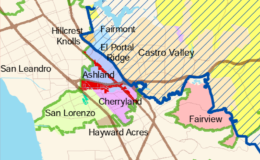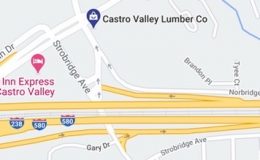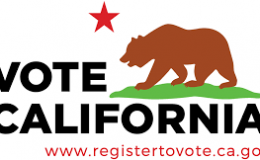Interesting concept. What are some of the options? Would it be best to have one large unincorporated town or broken up into multiple towns, Ashland Castro Valley, Cherryland, Fairview and San Lorenzo?
Bob
Nevada: A Bonanza for Unincorporated Communities
- By : Michael Baldwin
- Category : Governance, MAC, State of California
In California, either a county or a city produces the “local government” and municipal services you associate with a city hall and a mayor (unless you’re in San Francisco, which is both a city and a county).
We’ve been exploring different models of local governance at Castro Valley Matters because we believe that the 63,000 people of our community deserve more control over the city hall stuff of civic life, even if Castro Valley is not a city. We looked no further than Nevada for a viable third option for more robust local governance for California’s unincorporated communities.
A California county provides services to all residents of a county (such as public health and social welfare services), whether you live in a city or an unincorporated community like Castro Valley or San Lorenzo. When a county governs an unincorporated community, it’s helpful to think of it is your “local government of last resort.” That is, while the country is primarily focused on those services it provides all county residents and is serving as a delivery mechanism for certain State of California programs, for a smaller subset of county residents it is doing the city hall stuff, like planning and building infrastructure.
A county, particularly one serving urban communities where most of its citizens live in cities, is not ideally designed in delivering municipal services, both in how its agencies are structured and how revenues that flow into it are allocated. We believe that Castro Valley deserves just as good municipal services as our fellow county residents who live in cities.
The county/city governance model has not evolved much since the California Republic became a state in 1849. Sure, there have been changes in county lines, new counties have been carved out from others, but functionally, the county/city model has persisted since the Gold Rush.
But not in the Silver State. Nevada has come up with a model that has given its residents more say in their local affairs and could be replicated in California to enhance local control in unincorporated communities like Castro Valley.
Say hello to the “unincorporated town.”
Nevada law has recognized “unincorporated towns” in State Law since 1974, although they have existed since the 1950’s. Legally, an unincorporated California community does not exist in the eyes of the state government in Sacramento.

An unincorporated town in Nevada functions much like our unincorporated areas in California, with a few crucial differences. Each unincorporated town has a town advisory board (either elected or appointed) which acts as a liaison between the residents and the county while also advising the county on budgets and local ordinances, much like our MACs. Unlike our MACs, a Nevada County may also delegate the management of local services and expenditures to the town advisory board. Each town advisory board also has its own set of bylaws which specify their scope, and establish policies for ethics and conflicts of interest.
Putting that in a local context, if Castro Valley were a Nevada-style unincorporated town we might have a MAC with management and budgetary control over the Public Works, Animal Control and Street Maintenance activities within Castro Valley.
Furthermore, a Nevada county splits revenue with an unincorporated town the same way as it does with an incorporated city. Tax revenues generated are returned to the same city or unincorporated town that they were generated in.
In the Golden State, all tax revenues generated in Castro Valley (and all unincorporated areas) go directly into the general fund, to be distributed wherever the County sees fit, while revenue generated in cities like Hayward are returned directly to the city. That means the sales tax you pay at Rowell’s Saddlery or the property taxes on your Castro Valley home may actually go to pay for a sidewalk repair in Sunol or to fix a pothole in Ashland.

Unincorporated towns also have revenue generating capabilities of their own. A Nevada county can levy special taxes and assessments on the residents of the unincorporated town which can be used to pay for higher levels of county services, or most anything else. The county can also issue bonds on behalf of the unincorporated town.
If Castro Valley were an unincorporated town and we wanted a sidewalk, crosswalk, or parking lot somewhere we could pay for it ourselves. Instead of battling with the rest of the county for access to different “silos” of money, we’d have a silo of our own.
The unincorporated town can be formed either by the county or by the residents themselves through petitions. Once established, they can not be annexed to an incorporated city.

All of this was studied thoroughly by the State of Nevada in the early 1970’s. Since the laws regarding unincorporated towns were formally codified in 1974 (they had existed informally since the 1950’s,) they have been phenomenally effective. Some of the largest towns in Nevada are unincorporated. Paradise, Nevada has 223,167 people and encompasses most of the famous Las Vegas strip. Sunrise Manor (189,372 residents) and Spring Valley (178,395 residents) also surround the City of Las Vegas.

The Nevada “unincorporated town” model is a proven way of giving local control and governance to unincorporated areas and has proven to be popular among Nevadans. California could adopt a nearly identical set of regulations with virtually no cost to the state, providing a compelling option for those areas who cannot afford to or that are unwilling to incorporate. California counties would be relieved to get out of much of the local governance business, which counties were never designed to do, particularly in urban areas like Alameda County.
The millions of unincorporated residents in California deserve to have the same quality of governance that Nevada citizens have enjoyed since Elvis was singing on the Vegas Strip at the Las Vegas Hilton, located in the unincorporated town of Winchester.
Michael Kusiak also contributed to this post.


